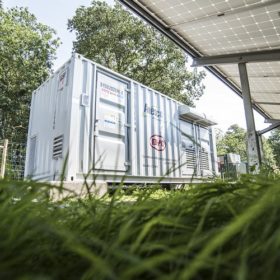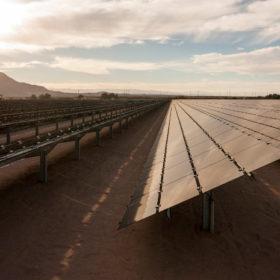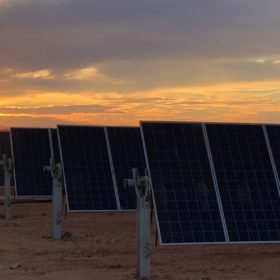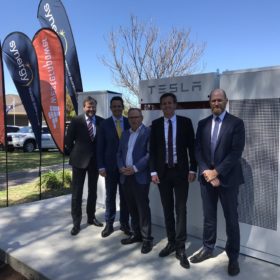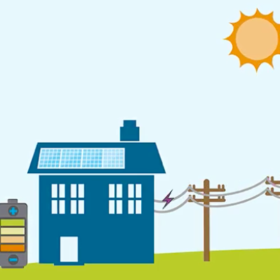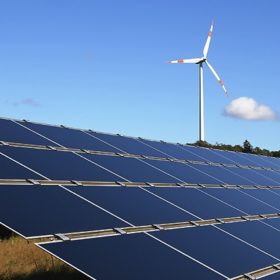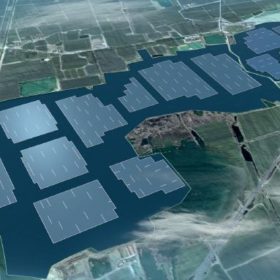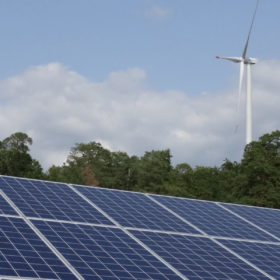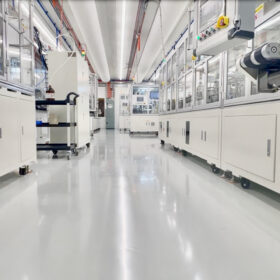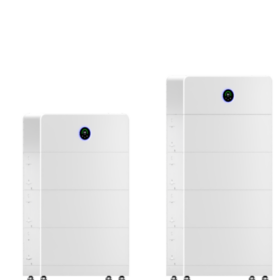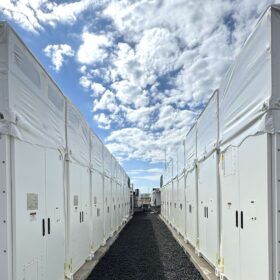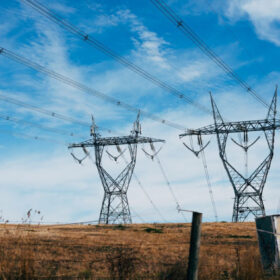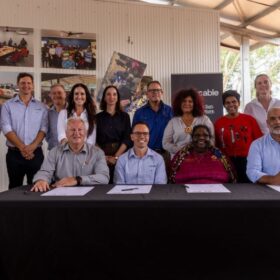BNEF: Australia among leaders in $1.7 trillion energy storage market
Bloomberg New Energy Finance has significantly increased its forecast for global deployment of behind-the-meter and grid-scale batteries from now to 2040. The research company sees Australia among nine markets that will be driving this trend, as the economic case for batteries becomes unstoppable.
Solar farm approved at Vales Point coal-fired power station
The NSW Department of Planning has given the green light the 55 MW Vales Point solar project, one of the first large scale solar power plant in Australia to operate in conjunction with a coal-fired power station.
Bungala Solar Farm goes fully online as Australia’s biggest solar project to date
After being commissioned in stages, the Bungala Solar Farm near Port Augusta in South Australia is now fully operational. At 220 MW/275 MWdc, Bungala is Australia’s largest solar farm completed to date.
Community Tesla battery trial kicks off ahead of schedule amid overwhelming interest
Australia’s first community battery trial went live on Monday, after the 52 available spots had been snapped up by Mandurah households – three months ahead of schedule. The trial involves a bulk Tesla battery integrated into existing grid and owned and operated by Western Power and Synergy.
NSW to invest $20m in batteries for schools, hospitals
The New South Wales government has announced plans to install up to 900 batteries with a total capacity of 13 MW on hospital and schools that already have rooftop solar systems.
“It just happened to be perfect timing”
Passing the 2 GW installation milestone, opening its DG business and moving into Southeast Asia: Nextracker’s Australian operations is proving to be a bright spot on global map. For Peter Wheale, VP responsible for Australia, Southeast Asia and the Pacific, it’s vindication of his conviction that the market was going to take off, and success in which fortuitous timing played no small roll.
Snowy Hydro contracts 888 MW wind, solar to push down energy prices
The government-owned energy provider has signed eight wind and solar PPAs to cover the shortfall in its existing energy generating capacity and put downward pressure on wholesale energy prices. Snowy Hydro says it will be able to offer firm supply contracts at less than $70/MWh, which undercuts the current wholesale price of electricity.
Australia has potential for 50 GW of floating PV capacity
The World Bank says global operational floating PV capacity has topped 1.1 GW, noting that adding floating solar to hydropower plants improves their flexibility while increasing energy yields. According to the latest WB report, Australia and Oceania have potential for 5 GW of floating solar on freshwater man-made reservoirs under conservative assumptions, and up to 50 GW under the most favorable scenario.
Major solar installer leaves Australian market
Against the backdrop of a mature rooftop solar market and a booming commercial and industrial solar sector, Australia has a competitive but vibrant solar retailer and installation market. However, not all have prospered and a prominent player has exited the market.
CEFC to keep investment pace despite policy uncertainty
While it has seen a major shift in business and the financial markets with industry seizing the opportunities offered by decarbonization, the Australian government’s green bank has reported a record year of investment in 2017-18 with a total of $2.3 billion allocated for clean energy projects. The CEFC expects to stay on this investment trajectory in the year ahead, signaling potential asset recycling.

